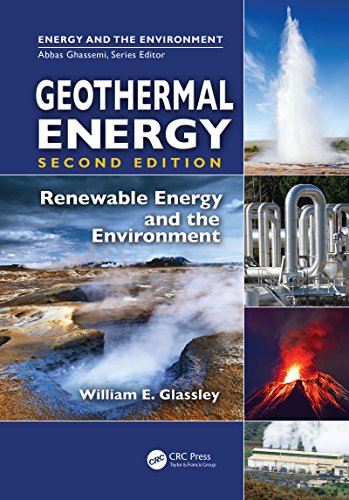Welcome to our blog post, where we delve into the fascinating world of solar energy and explore the underlying physics and engineering principles that make it all possible. In this article, we aim to shed light on how solar energy is harnessed and why it has become such a pivotal part of our transition towards sustainable and renewable sources of power. Whether you are a curious learner or someone who wants to understand the science behind solar energy, join us as we take a closer look at this remarkable and rapidly-evolving field.
Solar Energy: Physics & Engineering
Solar Energy: The physics and engineering of photovoltaic conversion, technologies and systems is an essential resource for anyone interested in understanding the principles and applications of solar energy. This comprehensive book offers a broad overview of solar energy, with a specific emphasis on photovoltaics, which is the technology responsible for converting light energy into electric energy.
In today’s world, where the demand for renewable energy sources is growing rapidly, it is crucial to have a thorough understanding of solar energy. This book covers the fundamental physics behind solar energy conversion, the engineering aspects of photovoltaic technologies, and the design and implementation of solar energy systems.
The book begins by providing a solid foundation in the physics of solar energy, explaining the principles of light absorption, electron excitation, and electron transport. It then delves into the various photovoltaic technologies, discussing different types of solar cells such as silicon, thin-film, and organic cells. The authors also explore advanced concepts and emerging technologies, including tandem cells, perovskite solar cells, and quantum dot solar cells.
Furthermore, this book offers valuable insights into the engineering considerations involved in the design and installation of photovoltaic systems. It covers topics such as system sizing, component selection, system integration, and grid connection. The authors also address important issues related to system performance, including energy yield analysis and optimization techniques.
Overall, Solar Energy: The physics and engineering of photovoltaic conversion, technologies and systems provides a comprehensive and up-to-date understanding of solar energy and its applications. Whether you are a student, researcher, or professional in the field of solar energy, this book will serve as an invaluable resource, providing you with the necessary knowledge to contribute to the advancement of this vital and sustainable technology.
We recently had the opportunity to review the book “Solar Energy: The physics and engineering of photovoltaic conversion, technologies and systems,” and we were thoroughly impressed with its comprehensive content and in-depth analysis of solar energy.
One of the standout features of this book is its broad overview of solar energy. It covers a wide range of topics, starting from the basics of solar energy and gradually delving into more complex concepts. Whether you’re a beginner or an experienced professional in the field, this book caters to all levels of expertise.
The focus on photovoltaics technology is another aspect that we appreciated. The book not only explains the fundamental principles behind photovoltaic conversion but also delves into practical applications and provides insights into the latest advancements in the field. It serves as an excellent resource for those wanting to gain a comprehensive understanding of this rapidly evolving technology.
The authors have done an exceptional job of covering the physics and engineering aspects of photovoltaic conversion. The book provides a detailed insight into the science behind solar cells, including the various materials, structures, and manufacturing processes used to create efficient and durable photovoltaic devices. It is a valuable resource for engineers and researchers looking to deepen their knowledge and improve their design and manufacturing techniques.
In addition, “Solar Energy” goes beyond photovoltaic conversion and explores different solar energy systems and technologies. It takes a holistic approach to solar energy, discussing topics such as solar thermal systems, concentrated solar power, and solar fuel production. This comprehensive coverage allows readers to develop a broader understanding of the various technologies and their potential applications.
Overall, “Solar Energy: The physics and engineering of photovoltaic conversion, technologies and systems” is a highly informative and valuable resource for anyone interested in solar energy. Its broad overview, focus on photovoltaic technology, coverage of physics and engineering aspects, and examination of various solar energy systems make it an indispensable reference book. We wholeheartedly recommend it to professionals, researchers, and students alike who are looking to expand their knowledge in the field of solar energy.
Exploring Renewable Energy Options for the Future
Comparing and Selecting the Best Energy Source for Your Needs
When selecting a group of energy sources, there are a few important factors to consider. First, we need to assess the availability and abundance of each energy source. It is crucial to choose sources that are not only accessible but also sustainable in the long run. Next, we should examine the environmental impact of these sources. Opting for clean and renewable energy options will help us reduce our carbon footprint and mitigate climate change. Additionally, we must take into account the cost and economic feasibility of each energy source. It is essential to choose sources that are affordable and offer a good return on investment. Finally, we should consider the reliability and stability of the energy sources, ensuring continuous and uninterrupted supply. By carefully evaluating and selecting a well-rounded group of energy sources, we can ensure a more sustainable and resilient energy future.
- Author Expertise: Check the credentials and experience of the book’s author. Look for authors who have a background or expertise in the field of solar energy, physics, or engineering. This shows that the book is likely to be written by someone knowledgeable and credible
- Clarity and Accessibility: Consider the readability and accessibility of the book. Look for clear explanations, well-structured chapters, and diagrams or illustrations that aid in understanding complex concepts. A good book should be equally useful for beginners and more advanced readers
- Additional Resources: Consider if the book offers supplementary materials or resources. Some books may include online access to additional resources such as interactive simulations, practice problems, or supplementary readings. These can be valuable for further learning and understanding
- Price: Lastly, consider the price of the book. While it is important to invest in a high-quality book, ensure that the price aligns with the content and value offered. Compare prices from different sellers or platforms to find the most reasonable option
Recognizing Warning Signs: How to Determine if “Solar Energy: Physics & Engineering” is Not the Right Product for You.
- There are a few warning signs that can indicate if the product “Solar Energy: The physics and engineering of photovoltaic conversion, technologies and systems” may not be the right fit for you
- Lack of Background Knowledge: This product is focused on the physics and engineering aspects of solar energy conversion. If you do not have a basic understanding of these subjects, this book may not be suitable for you
- Limited Interest in Solar Energy: If you do not have a genuine interest in solar energy technologies and systems, this product may not hold your attention or meet your needs. It is important to have a genuine passion for the topic to fully benefit from the content
- Alternative Learning Styles: Some people prefer visual demonstrations, hands-on experiments, or interactive online platforms to understand complex concepts. If you learn best through these methods rather than reading technical books, this product may not align with your preferred learning style
- Time Constraints: Assess your available time and commitment. This product covers a wide range of topics, and if you are unable to dedicate sufficient time to delve into the content, it may not be practical for you at the moment
Frequently Asked Questions about Energy Sources
What are the different technologies and engineering practices used to harness and store solar energy effectively?
To effectively harness and store solar energy, there are various technologies and engineering practices employed. Some of the key methods include:
- Photovoltaic (PV) Cells: These devices convert sunlight directly into electricity. When sunlight hits the PV cells, the photons in the light dislodge electrons from their atoms, generating an electric current. This direct conversion of solar energy into electrical energy is used in solar panels for power generation.
- Concentrated Solar Power (CSP): This technology uses mirrors or lenses to concentrate sunlight onto a receiver, which then converts the sunlight into heat, powering a turbine for electricity generation. CSP systems can also integrate thermal energy storage to store the heat for electricity production during periods when sunlight is not available.
- Solar Thermal Collectors: These systems harness the sun’s energy to heat water or other fluids for use in various applications. Flat plate collectors and evacuated tube collectors are commonly used to capture the sun’s heat and transfer it to a fluid.
- Solar Chimneys: This engineering practice utilizes the natural convection process to generate electricity. A solar chimney consists of a tall tower and a greenhouse-like structure. The sun heats the air in the greenhouse, creating an updraft. This updraft moves through the tower, driving turbines to generate electricity.
- Solar Batteries: Storage is a crucial aspect of solar energy utilization. Solar batteries store excess electricity generated during sunny periods for later use. This allows for a continuous power supply when sunlight is not available, such as during nighttime or cloudy days.
- Solar Water Heating Systems: These systems use solar energy to heat water for residential or commercial purposes. They typically comprise solar collectors, storage tanks, and piping to transfer the heated water for various uses like showers, space heating, or swimming pools.
- Solar Desalination: This technology harnesses solar energy to remove salt and impurities from seawater, making it suitable for drinking or agriculture. It utilizes the sun’s heat to evaporate water, leaving behind salts, and then condenses the purified water for use.
Discover the fascinating world of solar energy with “Solar Energy: The physics and engineering of photovoltaic conversion, technologies and systems”. Dive into the intricate workings of photovoltaic conversion, explore cutting-edge technologies, and gain insights into solar energy systems. Join us on this enlightening journey as we unravel the physics and engineering behind the limitless power of the sun.









